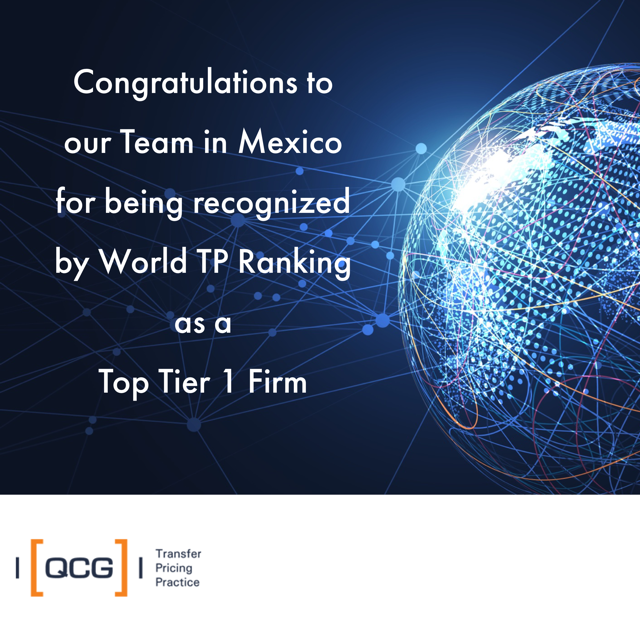Considering the complexity of controlling beneficiaries in Mexico
The figure of a controlling beneficiary (CB) was included in Mexico’s 2022 tax reform. This was following recommendations made by the Financial Action Task Force (FATF) and the Global Forum on Transparency and Exchange of Information for Tax Purposes (Global Forum) of the OECD.
The aim is to make transactions involving flows of income and assets transparent, and facilitate the identification of beneficial owners and the exchange of information. This will help to combat illicit activities such as money laundering, financing of terrorism, tax evasion, and tax avoidance.
Therefore, as of January 1 2022, companies must implement internal control procedures to identify, verify, and validate this person or persons.
This documentation and information regarding the CB must be kept as part of the accounting in a complete and up-to-date manner, since it may be requested by the Mexican tax administration (SAT) at any time. The SAT is required only to grant 15 business days to meet the request, although this may be extended for ten more days, when duly justified.
Who is the CB?
Article 32-B Quarter of the Federal Tax Code FTC (CFF) establishes that the CB is the individual person, or group of individual persons, who obtain the benefit derived from their participation in, or control over, the legal entity, trust, or any other legal figure.
The CB can apply for their situation to be interpreted in line with the recommendations issued by FATF, the Global Forum, and the OECD, provided they are not contrary to the Mexican provisions.
Who is obligated to inform?
The subjects that are obliged to inform are those indicated in article 32-B Ter of the CFF, namely:
- Legal entities, trustees, settlors, or trustees, in the case of trusts;
- The contracting parties or members, in the case of any other legal entity;
- Notaries, brokers, and any other person involved with, or who intervenes in, the formation or execution of contracts or legal acts that give rise to the creation of said persons or creation of trusts or any other legal figure; and
- Financial entities and members of the financial system for the purposes of the Income Tax Law.
What information must be kept up-to-date to comply with this obligation?
Rule 2.8.1.22, from the FMR Fiscal Miscellaneous Resolution 2022, establishes in twenty-two numerals the information that the SAT may request for compliance with this obligation, and five additional numerals for cases of chain of title, or chain of control.
For its part, Rule 2.8.1.20 of the Miscellaneous Resolution in force for 2022 establishes the criteria for determining the CB status of legal entities, when it is a benefit derived from the participation in the legal entity, either directly or indirectly.
In this latter case, it is necessary to identify, verify, and validate the chain of ownership, which is when indirect ownership is held through other legal entities.
In addition, when the CB has been created by means other than ownership, the chain of control must be identified, verified, and validated. This is the case in situations where control (strategic decision-making) is exercised indirectly through other legal entities, trusts, or other legal entities.
Sanctions for non-compliance
Articles 84-M and 84-N from the CFF (FTC Federal Tax Code) establish the sanctions related to non-compliance in this matter:
- Failure to obtain, retain or submit information: from MXN 1.5 to 2 million (approximately 75,000 to 100,000 USD) for each CB;
- Failure to keep information current: from MXN 0.8 to 1 million (approximately 40,000 to 50,000 USD) for each CB; and
- Present the information incompletely, inaccurately, with errors or in a different way: from MXN 0.5 to 0.8 million (approximately 25,000 to 40,000 USD) for each CB.
In addition, non-compliant companies could face the following:
- Negative compliance opinion (Rule 2.1.37 RMF– FMR Fiscal Miscellaneous Resolution 2022); means that the authority detected an unfulfilled obligation.
- The SAT may exercise verification powers over third parties related to them, in order to verify compliance in CB matters. (Art. 42 fractions XII and XIII CFF (FTC Federal Tax Code); and
- The interpretation or application of tax provisions regarding CB matters may not be subject to consultation in terms of Article 34 of the CFF (Rules 2.1.41 and 2.1.47 RMF 2022).
Impact on transfer pricing (TP)
In the process of identifying the CB, especially in the cases of chain of title and chain of control, related parties may arise that were not preliminarily recognised.
In these circumstances, it is important to emphasise that, if the CB carries out operations with the entity it controls, or related parties thereof, these operations must be reported, submitted to evaluation, and eventually their compliance with the arm’s-length principle must be confirmed.
From the point of view of the authorities and the courts, the absence of TP documentation may lead to the loss of the intercompany expense deduction, considering that it would not meet the requirements set forth in Article 27 of the LISR (Mexican Income Tax Law) in its subsections V and XVIII
Subsection V refers to deduction requirements for operations with foreign related parties. Meanwhile, subsection XVIII refers to the deadline to meet the requirements established by the law for each particular deduction.
In such cases, in the event that a taxable profit is established, this profit would be considered as a fictitious or non-dividend (LISR 140-VI).
Finally, and due to the mechanism set forth in Article 5 of the LIVA (VATL Value Added Tax Law), it would lose the possibility of crediting the VAT associated with the intercompany items disallowed as a deduction for income tax purposes.
Therefore, companies should initiate the necessary tasks to ensure the adequate fulfillment and proper compliance of this regulation as soon as possible. This will help to avoid, as far as possible, any sanctions.

